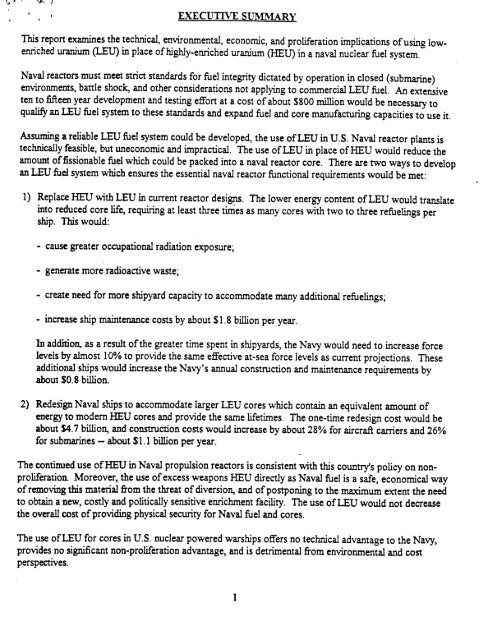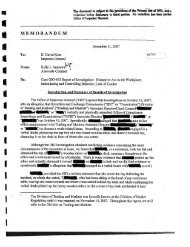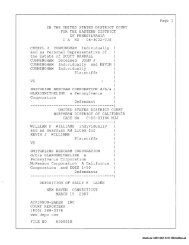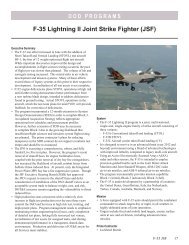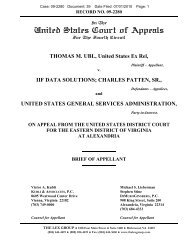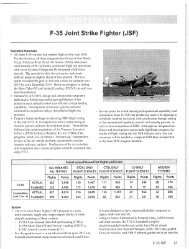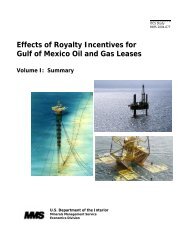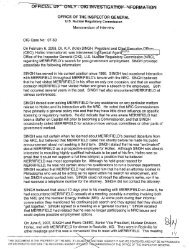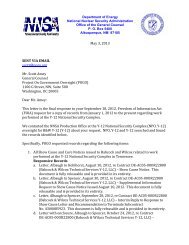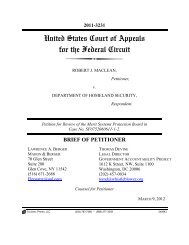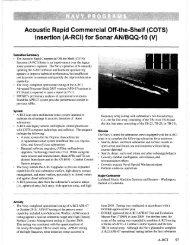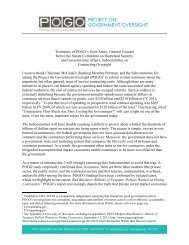REPORT ON IN NAVAL NUCLEAR JUNE, 1995
REPORT ON IN NAVAL NUCLEAR JUNE, 1995
REPORT ON IN NAVAL NUCLEAR JUNE, 1995
You also want an ePaper? Increase the reach of your titles
YUMPU automatically turns print PDFs into web optimized ePapers that Google loves.
',,"' '1'-)<br />
, , EXECUffi'E SUMMARY<br />
, This , report examines the technical, environmental, economic, and proliferation implications of using low-<br />
enriched uranium (LEU) in place of highly-enriched uranium (REV) in a naval nuclear fuel system.<br />
Naval reactors must meet strict standards for fuel integrity dictated by operation in closed (submarine)<br />
environments, battle shock, and other considerations not applying to commercial LEU fuel. An extensive<br />
ten to fifteen year development and testing effort at a cost of about $800 million would be necessary to<br />
qualify an LEU fuel system to these standards and expand fuel and core manufacturing capacities to use it.<br />
Assuming a reliable LEU fuel system could be developed, the use of LEU in U.S. Naval reactor plants is<br />
technically feasible, but uneconomic and impractical. The use of LEU in place ofHEU would reduce the<br />
amount of fissionable fuel which could be packed into a naval reactor core. There are two ways to develop<br />
an LEU fuel system which ensures the essential naval reactor functional requirements would be met: .<br />
1) Replace HEU with LEU in current reactor designs. The lower energy content of LEU would translate<br />
into reduced core life, requiring at least three times as many cores with two to three refuelings per<br />
ship. This would:<br />
-cause greater occupational radiation exposure;<br />
-generate more radioactive waste;<br />
-create need for more shipyard capacity to accommodate many additional refuelings;<br />
-increase ship maintenance costs by about $1.8 billion per year.<br />
In addition, as a result of the greater time spent in shipyards, the Navy would need to increase force<br />
levels by almost 10% to provide the same effective at-sea force levels as current projections. These<br />
additional ships would increase the Navy's annual construction and maintenance requirements by<br />
about $0.8 billion.<br />
2) Redesign Naval ships to accommodate larger LEU cores which contain an equivalent amount of<br />
energy to modem HEU cores and provide the same lifetimes. The one-time redesign cost would be<br />
about $4.7 billion, and construction costs would increase by about 28% for aircraft carriers and 26%<br />
for submarines -about $1.1 billion per year.<br />
The contimled use ofHEU in Naval propulsion reactors is consistent \1tith this country's policy on nonproliferation.<br />
Moreover, the use of excess weapons REU directly as Naval fuel is a safe, economical way<br />
of removing this material from the threat of diversion, and of postponing to the maximum extent the need<br />
to obtain a new, costly and politically sensitive enrichment facility. The use of LEU would not decrease<br />
the overall cost of providing physical security for Naval fuel and cores.<br />
The use of LEU for cores in U.S. nuclear powered warships offers no technical advantage to the Navy,<br />
provides no significant non-proliferation advantage, and is detrimental from environmental and cost<br />
perspectives.<br />
1


